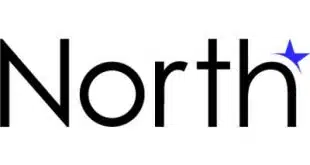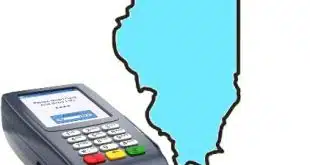Led by Apple's iPad, the rise of tablet computers is opening new card-acceptance options for merchants. Are they a disruptive force?
Jim Daly
Less than two years ago, the space in the portable computer market between smart phones on the small end and laptops on the large end was occupied by devices known as notebooks. They didnÕt sell well.
But everything changed on April 3, 2010, when Apple Inc. launched its iPad, a sleek device that posted sales in excess of 300,000 units on its first day and almost single-handedly created whatÕs called the tablet-computing market.
Apple has since sold nearly 40 million iPads, and rival computer and smart-phone makers are rushing to get competing tablets in the market, which also includes so-called e-book readers such as Amazon.com Inc.Õs new Kindle Fire and Barnes & Noble Inc.Õs Nook.
All of this is good news for card-accepting merchants, who suddenly have new hardware and software options for taking payments both indoors and outdoors.
Tablets have some major attractions for merchants and the acquirers and independent sales organizations that serve them. They all boil down to big screens. The iPad, for example, has a 9.7-inch diagonal display versus the 3.5-inch diagonal display on AppleÕs iPhone.
ÒYou get more graphical real estate,Ó says Marc Gardner, chief executive of North American Bancard, a big merchant processor based in Troy, Mich. ÒYou get a much better visual.Ó
Thousands of Apps
Tablets essentially are enhanced smart phones with Internet connections through Wi-Fi or 3G and 4G networks that run on mobile operating systems such as AppleÕs iOS, Google Inc.Õs Android, or Microsoft Corp.Õs Windows Phone. As such, they can run many thousands of appsÑsoftware applications created by third-party developersÑfor all manner of functions, including some for payments.
Depending on whoÕs counting, the iPad commands more than 60% of the market. Market observers expect a rush of Android tablets to hit the market this year in addition to devices running Windows Phone.
No one knows the exact number of merchants using tablets for payments. Some restaurants and retailers may use them for limited functions such as order taking or as Òline bustersÓ to record items customers have picked in preparation for checkout, but they donÕt do the actual payment.
ÒThereÕs very strong interest in that, but actual deployments arenÕt yet huge,Ó says Rick Oglesby, a senior analyst at Boston-based Aite Group LLC who is preparing a report on the tablet market for release early this year.
Tablets do have their shortcomings. They may be light and portable, but smart phones are even lighter and so portable that they fit in your pocket.
Tablets donÕt have some of the ports found on laptops or PCs that enable wired connections to peripheral devices such as printers. Tablet users have to plan on not using peripherals or buy wireless devices that use technologies such as Bluetooth to overcome that problem.
Finally, tablets cost more than smart phones. The iPad2 starts at $499, though competitorsÕ devices typically cost less.
Green Tablets
Still, merchants, acquirers and ISOs, and app developers are coming up with creative ways to use tablets for payments. For example, Green Cab of Madison has 24 taxicabs scooting around WisconsinÕs capital city, all but one of them Toyota Priuses decorated with images of green maple leaves.
Instead of two-way radios, they use iPads for communication between driver and dispatcher. Each iPad is anchored to a slide placed in the vehicleÕs slot for the radio, which has been removed.
Green CabÕs taxis accept credit cards. Transactions are processed by Square Inc., the payments firm headed by Twitter co-founder Jack Dorsey that gives merchants a cube-shaped card reader that plugs into the audio jack of an iPhone, iPad, or Android device.
Rather than using a single corporate account, each Green Cab driver has his or her own merchant account with Square, says Amanda Schmidt, marketing manager of the family-owned firm.
ÒWe really like Square,Ó she says. ÒIt takes [out] a lot of work … itÕs easier for the drivers to get their money than have to wait for us to get the credit slip.Ó
Card-paying customers tell the driver how much they want to add to the fare before the card is swiped, and they can have the receipt e-mailed to them.
Square is far from the only processor offering card-acceptance packages for small businesses using smart phones and tablets. Rivals include Intuit Inc.Õs GoPayment system as well as services from various acquirers, ISOs, and software companies working with ISOs.
ÔA Profitable SaturdayÕ
North American Bancard, for example, offers its Pay Anywhere app to its direct merchants and Phone Swipe app for its feeder ISOs to distribute to their merchants. Dean Huey, president of one of those ISOs, Topeka, Kan.-based Century Group, says he deployed five iPads to take donations at a September carnival and fundraiser for Calvary Lutheran School in Kansas City, Mo.
Parents actually supplied the iPads, onto which the Phone Swipe app was downloaded, according to Huey. They then roamed the carnival grounds seeking donations, which they were able to accept through Phone Swipe card readers.
Donors received e-mail receipts that included a Google Maps marker of the transaction location, a graphically nifty feature that had the further benefit of reducing the potential for chargebacks by providing evidence the donor was present at the sale, Huey says.
In all, the school raised some $28,000 through iPad transactions that day, according to Huey. Besides benefiting the school, the wow factor of the iPads produced a nice windfall for Century Group in the form about of about 10 new merchant accounts from donors with small businesses.
ÒItÕs a nice referral program,Ó Huey says. ÒIt was a profitable Saturday.Ó
Another such app is Credit Card Terminal from Redmond, Wash.-based Inner Fence LLC, one of the first companies to make a third-party payments app for the iPhone (ÒThe iPhone Effect,Ó March 2009). Inner Fence had a version of that app, Credit Card Terminal, ready to go on the day of the iPadÕs launch.
ÔDesigning from ScratchÕ
While pricing is the same for Credit Card TerminalÕs iPhone and iPad versions, the iPad one has a different user interface that renders graphics differently from the iPhone app.
ÒWe started designing from scratch because we think thereÕs a different user experience,Ó says Derek Del Conte, Inner FenceÕs co-founder and chief executive.
Del Conte, whose company works with the Dublin, Ohio-based ISO Merchant Focus, wouldnÕt disclose the number of Credit Card Terminal iPad users, but says, ÒItÕs a big market; thereÕs a lot of people that want to do payments on an iPad. I think itÕs more convenient for merchants.Ó
Contractors, professionals, and restaurants are big users of the iPad app, according to Del Conte. He notes that the iPad can more easily display than a smart phone the detailed invoices and receipts that some customers want, such as a remodeling contractor who in one job is actually delivering dozens of individual items. He adds that some office managers use iPads not only to take payments, but also to display floor plans to potential renters.
Inner Fence is developing an app for AmazonÕs new Kindle Fire tablet, an Android device.
While tablet computers used for payments are strongly associated with mobile payments, that isnÕt always the case. Coeur dÕAlene, Idaho-based HubWorks Interactive LLC has developed iPad hardware surrounds and applications for bars and restaurants called DrinkHub and FoodHub.
The startup currently is putting most of its effort on FoodHub, which HubWorks is marketing to national chain restaurants. The system is undergoing a test at a Buffalo Wild Wings store in Mississauga, Ontario, near Toronto.
FoodHub iPads are placed on tables or booths and enable diners to see the full menu, daily specials, and order without talking with a waitress. The application also can remember customer preferences for future visits and works with the restaurantÕs loyalty program, according to Sam Winter, HubWorksÕ co-founder and vice president of technology.
The iPads take payments, though the FoodHub application itself doesnÕt process card transactions. Instead, it connects to the restaurantÕs existing point-of-sale system.
FoodHub speeds up service and gives diners more control over their experience, says Winter. ItÕs not cheap, however: about $750 to $800 per table based on the cost for the iPad and FoodHub case. ÒUnfortunately, AppleÕs not big on providing quantity discounts,Ó he says.
HubWorks is keeping its eye on what it expects to be a plethora of Android tablets waiting in the wings, most of which will cost less than the high-end iPad.
ÔExtremely DisruptiveÕ
Indeed, payments executives are avidly anticipating the arrival of more tablets running on Android and the other non-iOS systems.
ÒEveryone I know loves iPads; however, you are going to see a lot of [other] tablets in the marketplace,Ó says Annmarie ÒMimiÓ Hart, chief executive of payment-processing hardware and software developer MagTek Inc. ÒThere will be a huge number of tablets coming into the market in 2012. WeÕre already working on it with a number of major companies.Ó
MagTek offers the QwickPay smart-phone app for iOS and Android, and a card reader. The Seal Beach, Calif.-based companyÕs solution is distributed by what Hart says are ÒhundredsÓ of partner acquirers and ISOs. Under development are products for up-and-coming Windows-based tablets.
The implication, according to Hart, is the development of a new class of POS terminal whose display shows much more than that of a traditional countertop terminal.
ÒThe tablets have the potential to change the face of retail POS,Ó she says, adding that incumbent terminal makers Òwill definitely lose market share.Ó
A stock analyst on Dec. 14 asked Douglas G. Bergeron, chief executive of leading U.S.-based POS terminal maker VeriFone Systems Inc., what he thought about software developers creating opportunities for mobile devices such as iPads to be used for payments. Bergeron responded during VeriFoneÕs fourth-quarter earnings call that mid-size and large retailers Òwant to innovate, but they also want to innovate on top of what they already have. The idea that everything gets thrown out is a little bit preposterous.Ó
Still, the tablet phenomenon is on its way to permanently changing the POS terminal market with its legacy manufacturers, according to North American BancardÕs Gardner.
ÒI think itÕs extremely disruptive, but it wonÕt be tomorrow,Ó he says.




